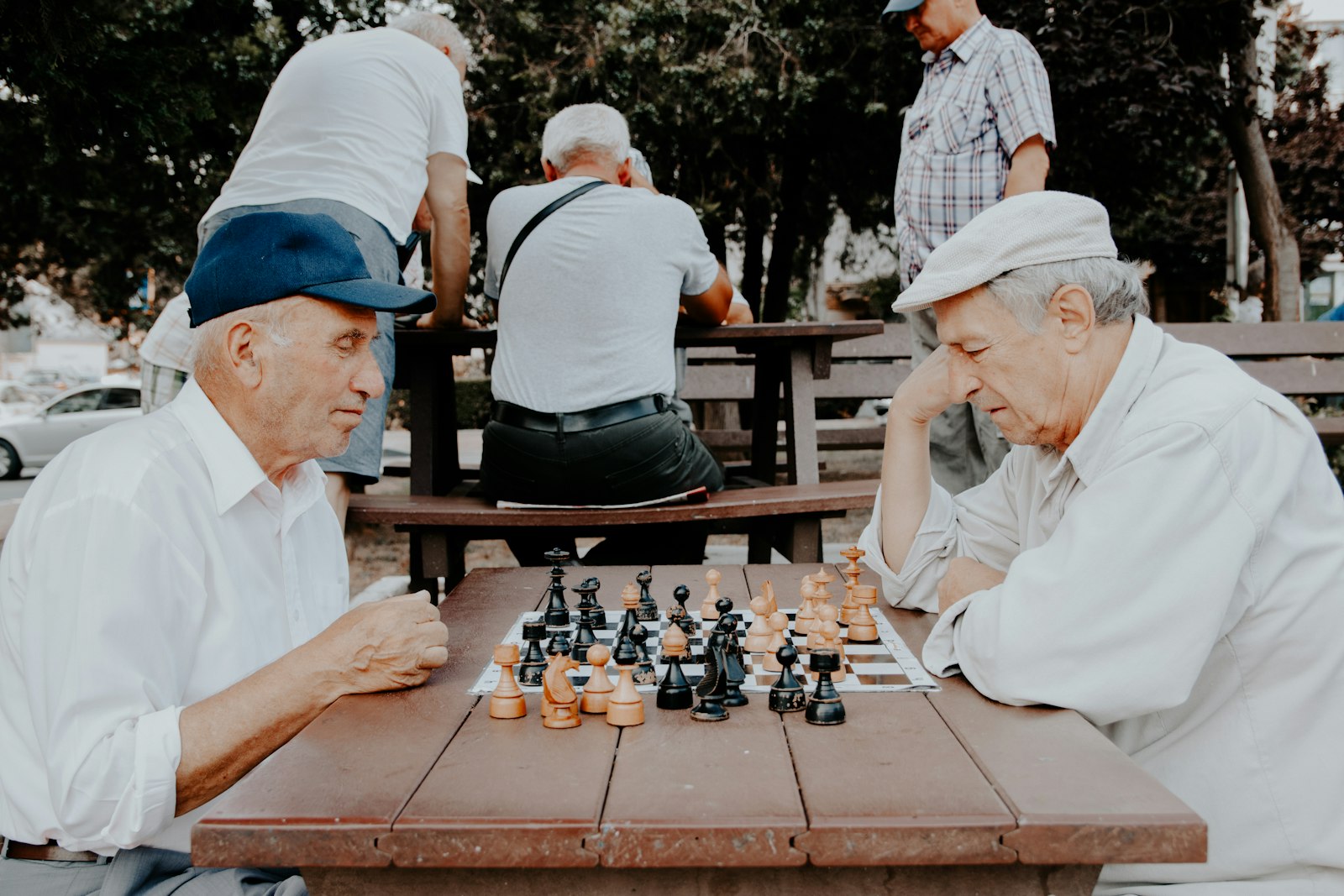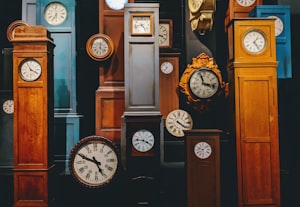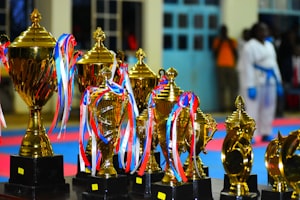I get the reason why overagers are almost never taken high in the draft, but I don't understand why they aren't taken more often in the middle and later rounds. Many people will say that prospects usually don't have a smooth developmental arc, where they have a steady progression of point production, ice time, or underlying numbers/tracking data every subsequent season until they make the NHL.
Things like injuries, playing time, coaching changes and new systems clashing with a player's strengths, being traded, moving to a new league/country, and other things going on in their personal lives that may affect their performance on the ice are real. They can also just have some really good luck one year and shit luck the next, and have a very different quality of teammates around them year to year – you see this a lot in junior leagues where the turnover is pretty frequent as guys age out or graduate to the next level all the time.
All this is to say that time is your friend when it comes to development. Imagine you had more time, data and viewings to watch a player as they grow and develop. Time smooths out a lot of the above contextual points, so you can have a better idea who they really are. You can also catch the late bloomers.
That's what you get with undrafted overagers. You aren't going to find blue chip prospects who go undrafted, which is why I get why overagers are almost never taken that high. But if you're going to swing on someone in the later rounds, you're just as likely to find someone who's an overager that can make the NHL eventually as you could someone who's eligible for the first time – by which I mean they all have very low chances anyway.
Here are some overage prospects that could make sense as later round targets for Toronto. Just like with the honourable mentions, I'll include five forwards (cough) and five defensemen.
Cole Knuble
Cole Knuble, son of former NHLer Mike Knuble, was a center prospect with a bit of hype in last year's draft by several scouting outlets, but went undrafted in his first year of eligibility. He had 49 points in 62 games, a good but not great point total, but it was on one of the lower scoring teams in the league. With a July birthday, he's still relatively young, and he tore up the USHL in his D+1 season this year with 66 points in 57 games – good for 9th in the league, and 5th for U19 players. He also grew another inch or two by the looks of it, now putting him at 5'11" and 185 lbs.
He has a solid all-around game, and is reported to have made some good improvements to his biggest areas of concern – his skating and strength on his feet. He's very versatile in the style or role he plays on the ice to help his team, depending on his linemates or situation. He has some advanced habits such as give-and-go's, sneaky off-puck movement to find open spaces on the ice to shoot, and is a very hard working player willing to take and give out contact to make plays. He has a good shot, from his forehand and backhand, and is a dual-threat with the puck as a shooter and playmaker. He has solid impacts on transitions, offensively, and pretty good on defense as well. He'll likely be a winger in the future but I don't completely write him off as a center just yet. We'll see how his NCAA career in Notre Game goes.
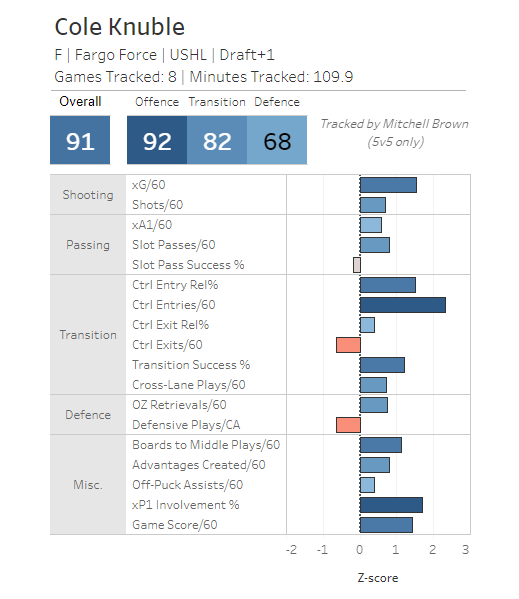
Yegor Sidorov
Sidorov is another relatively young overager, with a June 2004 birthday. He is a 6'0" import winger from Belarus who has played the last two seasons on Saskatoon in the WHL – which means I've seen a fair bit of him while watching Brandon Lisowsky this year. Last year, Sidorov had 23 goals and 35 points in 58 games, which is a good indication why he didn't get drafted. This year he exploded for 49 goals and 95 points in just 69 combined games regular season and playoff games, leading his team in goals and shots. He was tied for 8th in goals for the whole league, and tied for 4th for U19 players. He simply became one of the best goal scorers in the league.
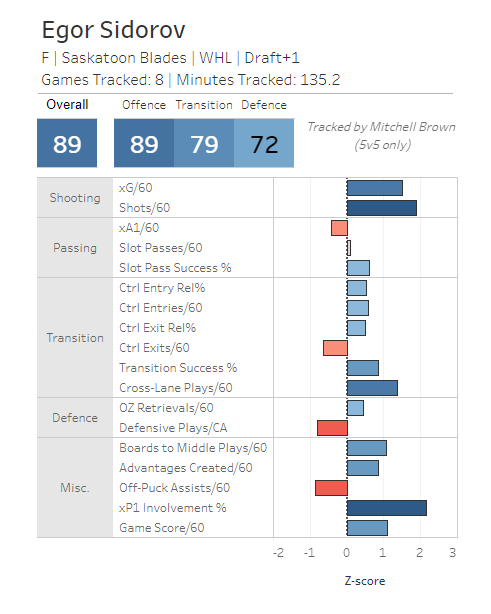
Sidorov has very exciting skills with the puck, using a lot of dekes and deception to free up lanes for his lightning quick release. But he also showed flashes of being a capable playmaker and passing it off instead, to often great effect. He has scored goals by shooting between his legs and made other highlight reel plays. These are high level offensive skills that hint at being a capable NHL scorer. He gets knocked by scouts for being too patient with the puck, and still taking low danger shots at times. But he's already made a big developmental leap this season, and seems to work hard at improving. So much so that he actually landed at 88th on Bob McKenzie's final rankings. That may be a bit early for my taste, but as an overager he may still fall.
🐯Yegor Sidorov - you are an absolute animal!
— Belarushockey.com (@Belarushockey) November 27, 2022
The young Belarusian prospect @77Yegor scored his second hat-trick @BladesHockey in the WHL, and his first goal is the main highlight of the season @TheWHL #NHLDraft pic.twitter.com/hCh1nsyauS
Zaccharya Wisdom
I actually included Wisdom as a 7th round option last year, after a low-point total season with 23 in 59 USHL games playing a depth role but having some very strong tracking data for the minutes he got. I shared some scouting reports on how he got praised for his hard working, physical, defensively responsible, power game. Even if the raw point totals didn't come, he led his team in points per 60 minutes, hinting at a greater scoring ability that hadn't yet had the chance to shine with more minutes or powerplay time. This year, Wisdom has grown an inch to 6'1", and has been given that bigger role and run with it.
Despite still not being given a top role behind a couple of other high scoring overagers, Wisdom was second on the team with 28 goals, and 4th on the team with 48 points in 59 games. But only 5 goals and 13 points came on the powerplay, while his teammates ahead of him on total points had close to double that amount. He played in all situations, including on the penalty kill where had two short handed goals.
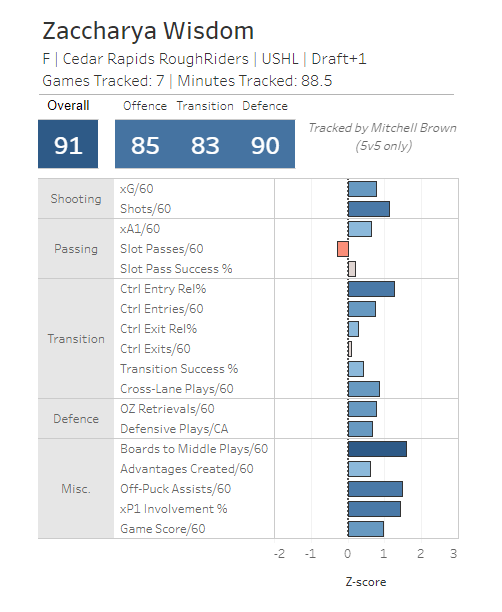
Wisdom's game remained focused on power and physicality: forechecking hard, bulldozing his way into the middle of the ice, and getting a lot of shots close to the net. He flashed some more finesse this season, and improved his skating to the point it isn't a major weakness. If he can refine his skating and offensive skills more he could make for an intriguing depth forward option who has everything you want for a supporting player plus some offensive potential to fit such a role.
Plus, for anyone who remembers, the life story of Zaccharya and his brother Zayde is extremely wholesome, and I want nothing more than for both of them to succeed and help reward their family for the huge sacrifices they had to make.
Zaccharya Wisdom (@RidertownUSA) tallies his first career USHL hat trick with a period of play left.#USHL @USHLPuckNews pic.twitter.com/Z92OlVEqcU
— Ryan Sikes (@ryan_sikes10) December 17, 2022
Kocha Delic
Delic is a Canadian center/winger prospect who played on the Sudbury Wolves in the OHL. At 5'10", he's a somewhat small forward who has a lot of flash and skill for an undrafted overager. Playing with top prospects like Quentin Musty and David Goyette at times, Delic never looked out of place and at times it was clear he helped them as many as the other way around. While watching Musty, I'd see the two of them pull off some highlight reel plays together. Sudbury has been an okay team with not a lot of talent outside of their few stars, but he improved from 46 points in 65 games last year to 52 points in 46 games this year.
The feed ✅
— Ontario Hockey League (@OHLHockey) March 11, 2023
The shot ✅
The celly ✅
The impressive play from the @Sudbury_Wolves duo of Quentin Musty and Kocha Delic checked off all the boxes to secure Friday's #BestOfOHL honours 📽️@MilkUPOntario | #MilkUPxOHL pic.twitter.com/39FAXcf3UB
Delic is a better playmaker than a goal scorer, but is pretty adept at both – and is excellent on transitions. He is a shifty skater and has some slick hands when he has the puck. The big concern with him still is that his overall set of tools and skills still don't quite seem at a high enough level. His skating is good, but considering his size it's what he would need to improve the most still. As a late round flyer, if you think there are enough parts you can improve with the right developing and coaching? I could see it.
Yegor Vinogradov / Vadin Moroz
In classic "me" fashion, I couldn't make up my mind between these two for the fifth and final spot for the forwards on this list. So I'll include them both!
The problem is they're both very similar. Both are 2003 born forwards who played mostly in the KHL this year. Vinogrodov (Russia) is a bit older, and since Moroz (Belarus) was born in November he is technically only a D+1 overager while Vinogrodov is a D+2. Both are 6'2" and very similar weight (185 vs 181 lbs). Both were among the better point producers as U20 players in the KHL this year – Vinogradov had the third most total points (17), while Moroz tied for third in KHL U20 points per game (0.36) since he played fewer games. Both were only behind uber prospect Matvei Michkov and Toronto prospect Nikita Grebyonkin. Both played more depth roles than Grebyonkin did, averaging around ~10 minutes of ice time in the KHL. Both have also played in all situations at times, even in the KHL – Vinogradov had a bit more opportunity on the powerplay, while Moroz was used a bit more on the penalty kill.
Stylistically they diverge a bit. Vinogradov doesn't have the same speed, but can be smart and shifty with the routes he takes. He plays more of a pure power game and has a better shot. He's very strong around the net to put home rebounds and looked pretty adept with some deflection goals. He's smart with his positioning and knows how to find soft spots on the ice to take his shots, and when his KHL season was over he joined his MHL team and won the MHL championship – he even scored the OT winner for the championship winning goal.
Vinogradov is wearing #92 in every clip above
Moroz is faster and more electric as a skater, but I'd still only rate him above average. He has a better set of hands with the puck and is more dynamic and fun to watch. I would rate both behind Grebyonkin but not by much. I think Moroz is a better prospect right now mostly because of the skating, but I just like the style of play Vinogradov plays with a bottom six role in mind. If he can fix his skating enough I can see him being the better player in the end. Both are long shots, but if Toronto rolled the dice on either of them in the 6th round this year I wouldn't hate it.
Moroz is wearing #13 in most clips, but occasionally wearing #51 from his MHL games
Rodwin Dionicio
Dionicio (6'2", left shot) is a Swiss-born defenseman who has been in the OHL the past two seasons. I wrote about him as a 7th round option last year. He was a highly offensively creative defenseman who went under the radar on the truly terrible and dysfunctional mess that was the Niagara Ice Dogs – just ask Adam. This year he started again on Niagara before being dealt to Windsor, who was actually a good team and not a dysfunctional mess. And to say Dionicio's game exploded after that would be an understatement, as he had taken his game to a whole new level. He finished with 43 points in 33 games with Windsor, and quite simply dominated play while he was on the ice – mostly offensively, but he had made some defensive improvements as well.
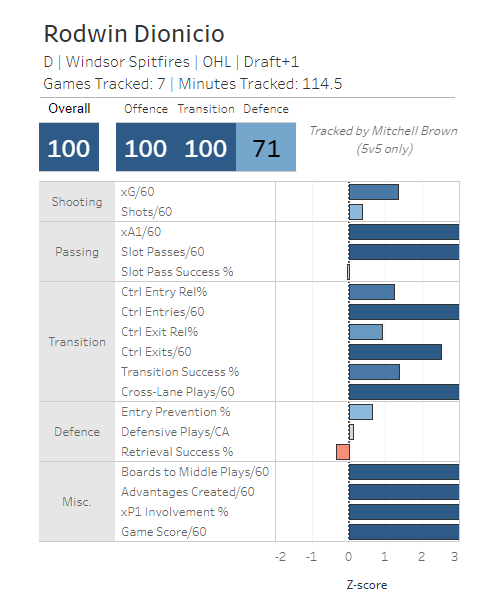
Dionicio has amazing vision and some of the niftiest of mittens when he has the puck. He fakes, dekes, delays, twists and turns, shimmies, and any other word you can think of to describe creativity handling the puck. He's a decent goal scorer for a defenseman and has a good shot, but that's mostly from his ability to get into dangerous areas with the puck. He's a much stronger playmaker in every sense of the word. He creates offensive opportunities out of thin air, and was quite simply one of the most offensively dominant defensemen in the entire OHL.
His big weaknesses is still his defense and his skating. Both improved from last year, but will still require work to improve even further. His offense was unlocked so much by those changes that I would gamble on him with a late pick and work on those issues as much as possible. You're not going to find a player of any position with his kind of talent that late in the draft, which makes me think he might not actually fall to the 5th or 6th rounds. The funny part is that at times last year, Windsor used Dionicio as a forward instead of a defenseman, and his skills still worked well. So any team willing to take him on as a long term project and choose whether it makes more sense to try and keep him as a defenseman or convert him to a forward – the next Brent Burns and Dustin Byfuglien, if you will.
RODWIN DIONICIO WITH AN INCREDIBLE HAT-TRICK 🔥🔥🔥
— Ontario Hockey League (@OHLHockey) March 5, 2023
The defenceman helps the @SpitsHockey erase a 5-1 Sarnia lead with his first-career hatty 👀 pic.twitter.com/KFveWd5RZ3
Hudson Thornton
Thornton is another guy I included with Dionicio in that article last year, and is also more offensively inclined. He's smaller (5'11") and his tracking data had some small improvements over last year, mainly on defense. The big change came when he got more playing time, mainly in general – he actually already was his team's main PP quarterback last year as well. He set franchise records with Prince George for goals (23) and points (74), finishing second in the entire WHL in both only behind Olen Zellweger. But he also killed penalties and played late in games to hold the lead.
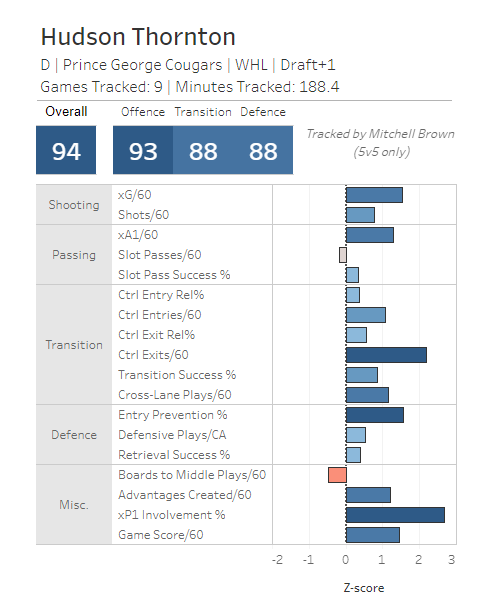
The improvements that Thornton made offensively come from making better decisions with the puck. He has the puck a lot when he's on the ice, kickstarting Prince George's offense transitioning from the defensive zone. He plays pretty aggressively on both sides of the puck, which has a high-risk but high-reward element to it. He can still make some mistakes and turnovers that may look bad, but he got a lot more efficient when he chose to take risks this year. Defensively he got better as well, especially using his skating to shut down zone entries. He's another guy I wouldn't mind swinging on with a later pick, and I think he could be available too.
Hudson Thornton, who we @EPRinkside felt more than deserved to be drafted last June, has 5 points so far tonight.
— /Cam Robinson/ (@Hockey_Robinson) November 19, 2022
He’s up to 28 points in 20 WHL games this season - top among all defenders. pic.twitter.com/urkkibP04C
Niks Fenenko
Switching things up a bit, Fenenko is a Latvian born import defenseman playing in the QMJHL the last couple of seasons. Once again, I wrote about him in that 7th round defensemen piece for last year's draft. He's 6'1" and still one of the better skating defensemen. His strength still comes on the defensive side of the puck, using his skating and positioning to shut down the other team's offense. He had 40 points in 62 games as an import rookie defenseman with a late (Aug 14) birthday, and had 37 points in 56 games this year. His offensive production may not appear to have improved, but the truth is his point totals last year were pretty inflated by secondary assists and good luck. This year, he upped his shot rate and improved the quality of his offensive contribution, all while his team actually got worse offensively around him.
Quelle passe savante de Niks Fenenko! #Drakkar pic.twitter.com/fQ04lS4mGA
— 🦀 Drakcast 🦀 (@drak_cast) February 9, 2023
Where Fenenko really shined this year was at the World Juniors. Playing on a weaker Latvian team, he was heavily relied on to keep them in games. Not only did he hold his own defensively against some of the top teams in the tournment, but he also showed he could have more of an offensive impact than he had been in the QMJHL. By tracking data, he was close to the top in a lot of categories on both sides of the puck. So while he isn't an elite defenseman, he's still quite intriguing to me. I don't care that much if he is a dynamic offensive defenseman, he just needs to work on his skills enough that he can be a positive impact player on the offense – push the puck up the ice, get it out of the defensive zone with control, keep the puck moving without turning it over in the offensive zone, and so on. With that, his skating and defense could be enough to make him a capable depth defenseman in the NHL.
Niks Fenenko buries the point shot to tie the game 🚨
— TSN (@TSN_Sports) December 26, 2022
USA 2 - 2 Latvia #WorldJuniors pic.twitter.com/V6kLaBH7m9
Charles-Alexis Legault
Legault is the first defenseman on this list that I did NOT write about last year! He's a late birthday (Sep 5, 2003) which means that even though he's a D+2 overager, he's still only 19 years old. He's made quite the journey in his development, starting in Quebec – where he's from – and their AAA circuit, then playing in his original draft year in the USHL (23 games, 5 points), then moving to the BCHL (36 games, 18 pts; 11 pts in 11 playoff games). I don't know if he's been hurt a lot the past two years, but his games played has been low each of the two previous seasons. This season, Legault finally joined Quinnipiac in the NCAA – and good timing too, as they finished as the NCAA champions after breaking Matthew Knies' heart, the bastards!
Legault with the beautiful find and Skyler makes no mistake 😤#BobcatNation | #ECACHockey pic.twitter.com/CT5IfF6Ak7
— Quinnipiac Men's Ice Hockey (@QU_MIH) November 19, 2022
Legault was not heavily used as a 19 year old freshman, but by scouting reports he did well in the opportunities he was given. Quinnipiac was a very old team from the backend, and three of their top defensemen from last year have moved on – another two have completed their fourth season in the NCAA, but could play a fifth like one of the others did? I don't really know how that works. Point is, Legault will likely be given a big increase in his role next season. He got rave reviews from scouts and his coaches about the poise and confidence he played with, and how effective he was in his limited minutes. He profiles more as a defensive defenseman but could still have some untapped offensive potential that he hasn't had the chance to really show yet. He will very likely go undrafted this year, but given his size (6'3") and handedness (right shot), and his role on a championship winning team... maybe someone takes a swing on him.
Charles-Alexis Legault catches Jake Wise with a massive hit in the neutral zone@QU_MIH#NCAATournament #MFrozenFour pic.twitter.com/AI7pf3OzXT
— EP Rinkside (@EPRinkside) March 26, 2023
Jeremy Hanzel
Hanzel is a 6'1" left shot defenseman who I did NOT write about in that 7th round defenseman targets from last year. Instead, I wrote about him in my 7th round overager targets! Basically take what I said last year, and basically repeat it with updated stats. He improved his offense yet again, jumping from 33 points in 63 games to 48 points in 66 games. He also improved his playoff production from 13 points in 25 games to 22 points in 19 games. The whole while, he was playing in all situations and lots of minutes for the best team in the WHL.
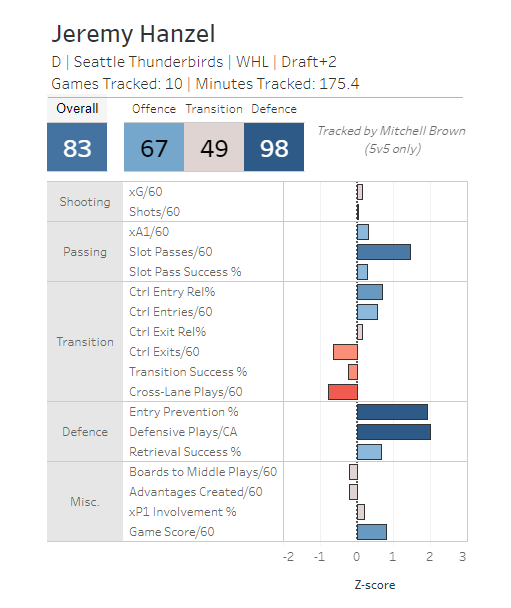
He also again improved his defense and his skating, and by the end of the year he was relied upon very heavily for Seattle, who wound up winning the WHL championship and were a win away from being the Memorial Cup champions as well. He wound up being just as used, or even moreso, than the likes of Kevin Korchinski and Nolan Allen who are both first round NHL picks. Being a D+2 defenseman, Hanzel has more polish and refinement than defenders in their first year of eligibility this year.
Jeremy Hanzel nets his second of the night, making it a 6-2 game! #WHLChampionship pic.twitter.com/OpRvJAJqAj
— TSN (@TSN_Sports) May 17, 2023
Thanks for reading!
I put a lot of work into my prospect articles here, both for the draft and Toronto's prospects. I do it as a fun hobby for me, and I'd probably do it in some capacity even if PPP completely ceased to exist. But if you like reading my work, some support would go a long way! I pay for a few streaming services (CHL, some NCAA, some USHL, the occasional TSN options for international tournaments that are broadcast) to be able to reliably watch these prospects in good quality streams. I also pay for some prospect-specific resources, such as tracking data and scouting reports from outlets like Elite Prospects, Future Considerations, McKeen's Hockey, and The Athletic.
Being able to get paid for this helps me dedicate more time and resources to it, rather than to second/third jobs. And whatever money I make here, a lot of I reinvest back into my prospect work through in those streaming and scouting services. Like I said, I'd be doing whatever I can afford for this anyway, so any financial help I get through this is greatly appreciated!

